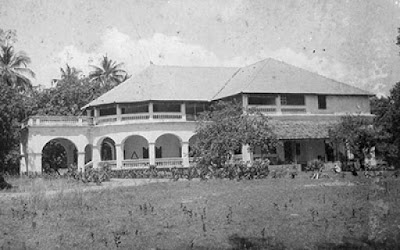 |
| SBI, Nagapatinam branch.cuboidglobal.com |
The Nagapatinam branch of the State bank of India is a fine heritage building located almost on the outskirt of the coastal town, now a district capital. It was an important small harbor until 1960s on the Coromandel Coast of Tamil Nadu. Since it was not a deep harbor the ships used to be anchored far away from the shore and the cargo and passengers had to depend on small motor boats in those days to reach the shore and back. The harbor had sea links with Singapore and Malaysian ports way back in the past. There used to be some important export and import houses on the beach road , close to the lighthouse.
As for the bank building it is on a vast plot surrounded by a few more British Colonial styled buildings. Unfortunately, because of poor maintenance and lack of periodic repair work these buildings including the one owned by SBI are wilting under age and vagaries of climatic conditions. When occupied for safety considerations, concrete columns, etc., were erected and in the recent past the structure fell vacant, as it was in bad shape, misfit for occupation.
It is a beautiful two-story building with an arched entrance in the porch and slanting tiled roof over the first floor supported by columns along the edges, almost reminiscent of Kerala-type buildings. The building has spacious halls and access to the upper floor is through a grand wooden staircase. The building has deep verandah with arches all along on the ground floor and columns on the first floor. The architecture of the building is typically colonial and the roof on the GF has Madras terrace, a blend of local style. The pitched roof on the upper floor is covered with Mangalore tiles and its conical profile is a striking feature and a fine piece of carpentry work. The deep verandah and the trees in the surrounding areas facilitate free flow of air circulation inside the building and considerably cut down radiation during hot days. The restoration work is planned to maintain the heritage aspects of the structure without deviating from the original plan. The restoration work will be undertaken in a systematic manner as preplanned before.
https://cuboidglobal.com/projects/restoration-of-state-bank-of-indias-heritage-buildings/938/









